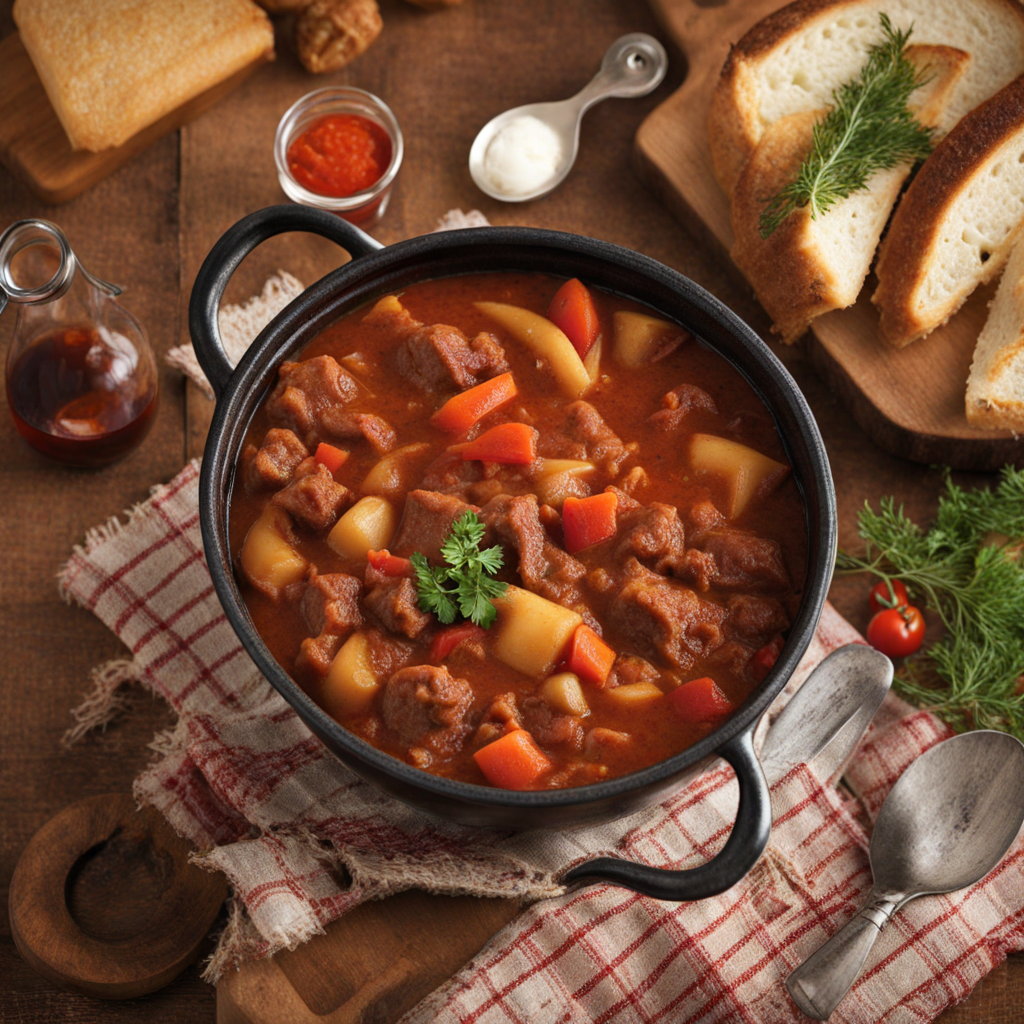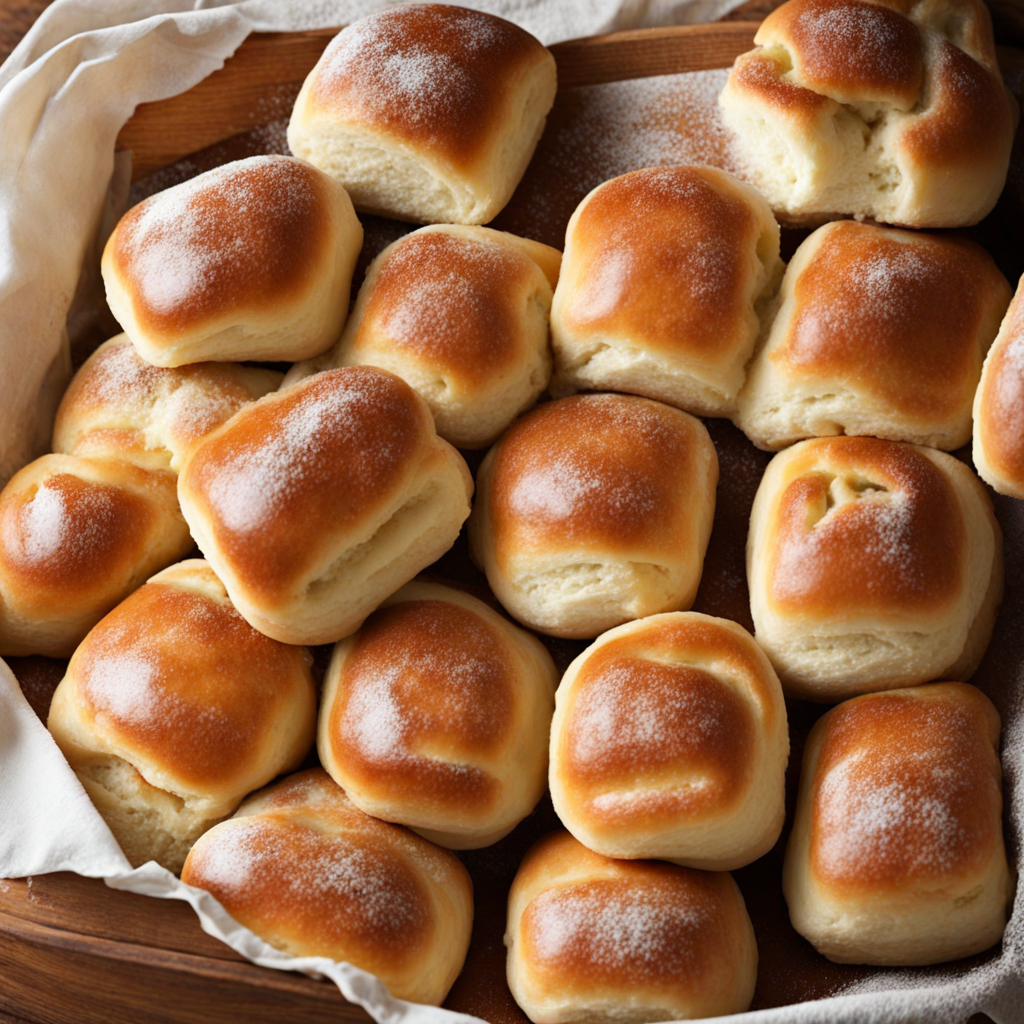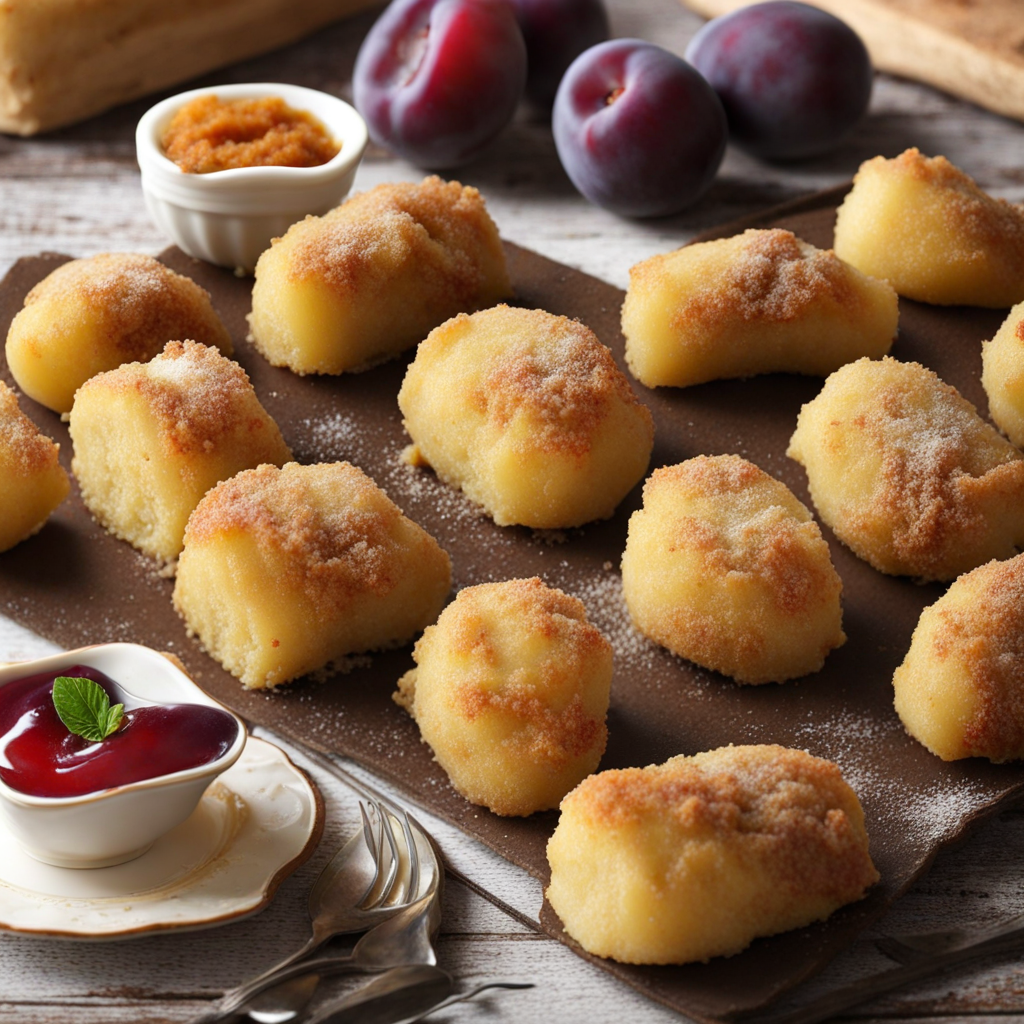Slovak Goulash
Slovak Goulash, known as "Slovenský Guláš," is a hearty and robust dish that embodies the rich culinary heritage of Slovakia. This comforting stew is primarily made with tender chunks of beef or pork, which are simmered slowly to perfection, allowing the flavors to meld beautifully. The meat is accompanied by an array of vegetables, including onions, bell peppers, and potatoes, all contributing to a vibrant and fulfilling meal. The inclusion of spices, particularly sweet paprika, gives the goulash its signature deep red color and a warm, slightly smoky flavor that warms the soul on a chilly day. What sets Slovak Goulash apart from its Hungarian counterpart is the balance of flavors and the use of local ingredients, which can vary depending on the region. Some variations include the addition of caraway seeds, garlic, and even a splash of red wine, enhancing the dish's complexity. The stew is typically served with hearty sides such as bread, dumplings, or even a creamy polenta, perfect for soaking up the rich, flavorful broth. Each bite is a delightful combination of savory meat, tender vegetables, and aromatic spices that make for an unforgettable culinary experience. In Slovakia, Goulash is more than just a meal; it’s often enjoyed during gatherings and celebrations, bringing people together over a shared love for good food. The dish is a staple in Slovak cuisine, showcasing the country's agricultural bounty and traditional cooking methods. Whether enjoyed in a rustic tavern or prepared at home, Slovak Goulash is a dish that invites you to explore the heart of Slovak culture through its comforting and satisfying flavors.
How It Became This Dish
Slovenský Guláš: A Culinary Journey Through Slovakia #### Origins Slovenský guláš, or Slovak goulash, is a beloved dish that embodies the spirit of Slovak cuisine and its rich cultural heritage. While it shares its name with the Hungarian gulyás, Slovenský guláš has distinct characteristics that reflect Slovakia's unique culinary identity. The roots of this dish can be traced back to the pastoral communities of the Carpathian Mountains, where the traditions of farming and herding were deeply ingrained in daily life. The term "goulash" itself is derived from the Hungarian word "gulyás," which refers to a herdsman or cowboy. The connection to cattle herding is significant, as the dish historically utilized the cuts of meat that were most readily available to these pastoral communities. Goulash was traditionally made by slow-cooking meat with vegetables and spices, creating a hearty stew that provided sustenance for laborers working in the fields or tending to livestock. #### Cultural Significance Slovenský guláš is more than just a meal; it is a symbol of hospitality and community. In Slovakia, sharing food is an important social activity, and guláš often finds its place at gatherings, celebrations, and family dinners. The slow-cooked nature of the dish allows for its preparation in large quantities, making it ideal for feeding groups of people. This dish also reflects Slovakia’s geographical and historical context. The country is situated at the crossroads of various cultural influences, including Hungarian, Austrian, Czech, and Polish cuisines. As a result, Slovenský guláš showcases a blend of flavors and techniques that have evolved over centuries. The use of paprika, for instance, is a nod to Hungarian influences, while the incorporation of local vegetables and spices highlights Slovakia's agricultural traditions. In many Slovak households, guláš is not just a recipe; it is a cherished family tradition passed down through generations. Each family may have its own variation, incorporating personal touches that reflect regional ingredients or culinary practices. This adaptability has helped the dish maintain its relevance and popularity throughout the years. #### Development Over Time The evolution of Slovenský guláš can be traced through various historical and social changes in Slovakia. In the early 19th century, as the Austro-Hungarian Empire expanded, culinary exchanges flourished. This period saw a rise in the popularity of goulash as a staple dish, moving from rural kitchens into urban dining establishments. Slovenský guláš began to take on a more refined presentation, often served in restaurants alongside traditional Slovak sides like bread dumplings or potato pancakes. With the onset of the 20th century and the establishment of Czechoslovakia, Slovenský guláš continued to evolve. The interwar years saw a melding of culinary traditions as Slovaks and Czechs shared their respective foods. During this time, guláš became a symbol of national pride, representing the agricultural bounty and culinary heritage of Slovakia. The World War II era brought significant changes to food production and consumption, as rationing and scarcity affected many European countries, including Slovakia. Traditional recipes were adapted to utilize available ingredients, leading to variations of guláš that incorporated whatever could be found. This period of hardship only strengthened the association of guláš with comfort and resilience. The post-war era in Slovakia, particularly during the communist regime, saw a renewed focus on traditional dishes as a means of reinforcing national identity. Slovenský guláš regained its prominence as a symbol of Slovak culture and pride. Home-cooked meals became a way to maintain connections to the past, and the dish was often featured at communal celebrations and holidays. In recent decades, as Slovakia emerged as an independent nation after the Velvet Revolution in 1989, there has been a resurgence of interest in traditional Slovak cuisine. Chefs and home cooks alike have begun to explore the diverse regional variations of guláš, experimenting with new ingredients and modern cooking techniques. This renaissance has led to a revival of interest in local food markets, where traditional ingredients can be sourced, allowing for a more authentic preparation of the dish. #### Modern Variations Today, Slovenský guláš is enjoyed in various forms across the country. While the classic recipe typically includes beef, onions, garlic, and spices such as paprika, regional variations may incorporate pork, chicken, or even game meats like venison. Vegetables such as carrots, potatoes, and bell peppers are often added, depending on what is in season and locally available. Some modern interpretations of Slovenský guláš also embrace the trend of health-conscious cooking, incorporating leaner meats or even plant-based alternatives. Vegetarian and vegan versions of the dish have emerged, substituting meat with hearty legumes or mushrooms, while still maintaining the essential flavors that define the goulash experience. In addition to its traditional presentation, Slovenský guláš has found its way onto contemporary dining menus, where chefs experiment with plating and flavor combinations that honor the dish's heritage while appealing to modern palates. The popularity of food festivals and culinary tourism has also contributed to the dish's prominence on the international stage, allowing visitors to Slovakia to experience this culinary treasure firsthand. #### Conclusion Slovenský guláš is a dish that tells the story of Slovakia—a narrative woven through the threads of history, culture, and community. It epitomizes the resilience of a people, adapting to changes while holding onto cherished traditions. As Slovakia continues to embrace its culinary heritage, Slovenský guláš remains a staple of Slovak identity, bridging the past with the present and inviting future generations to savor the flavors of their homeland. Whether served at a family gathering, a festive celebration, or a modern restaurant, this iconic dish continues to warm hearts and nourish souls, ensuring its place in the annals of Slovak cuisine for years to come.
You may like
Discover local flavors from Slovakia







